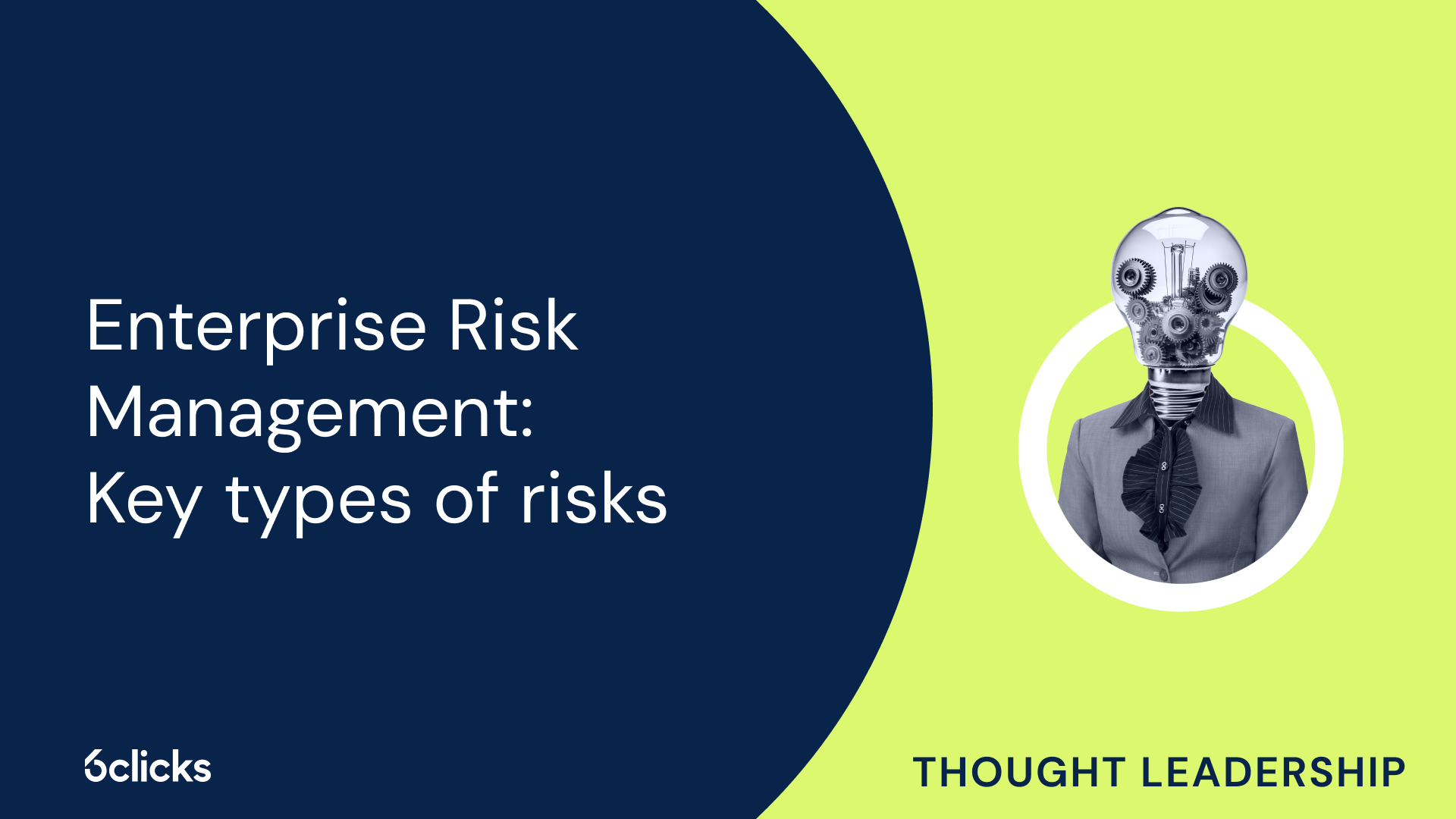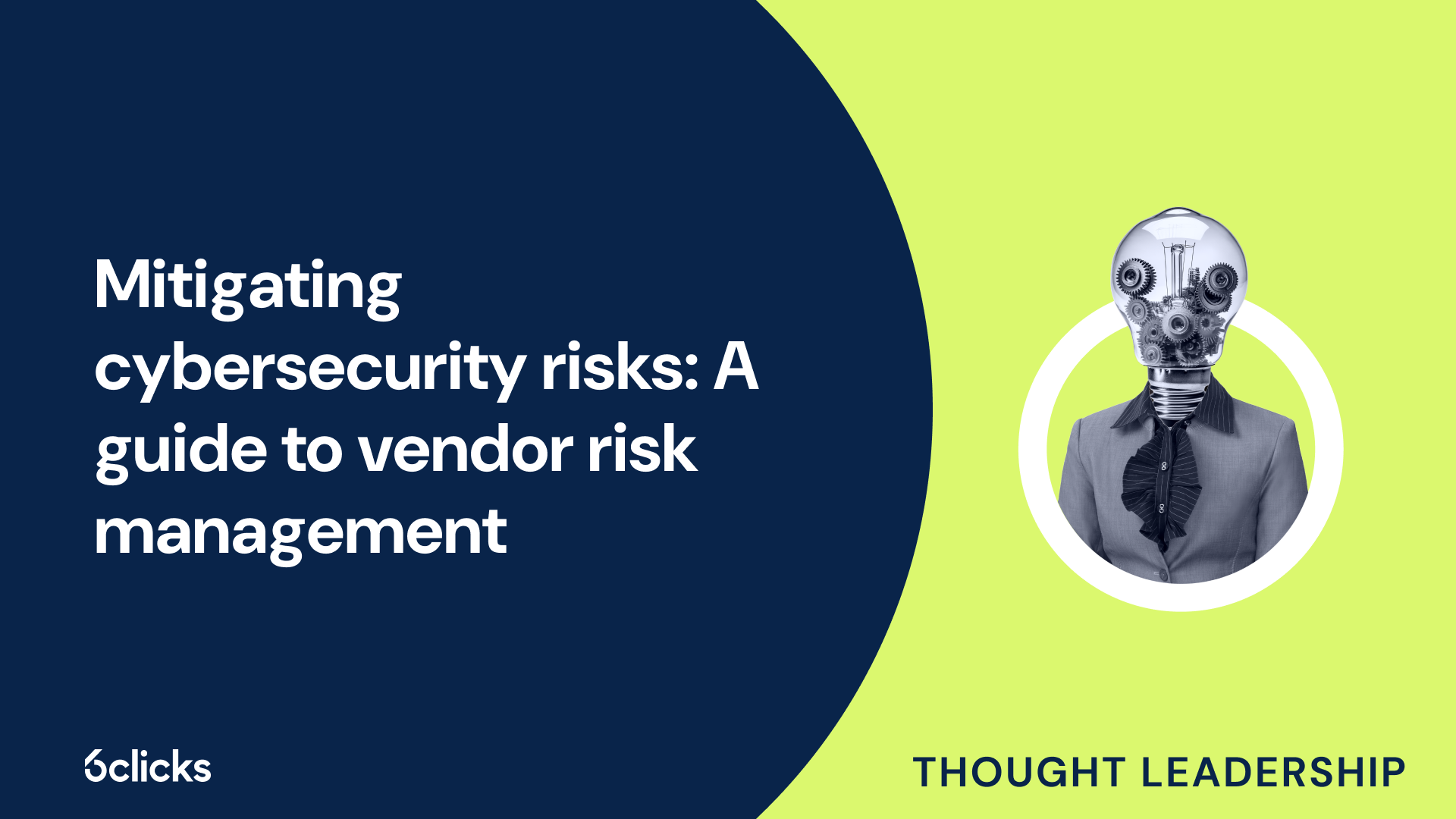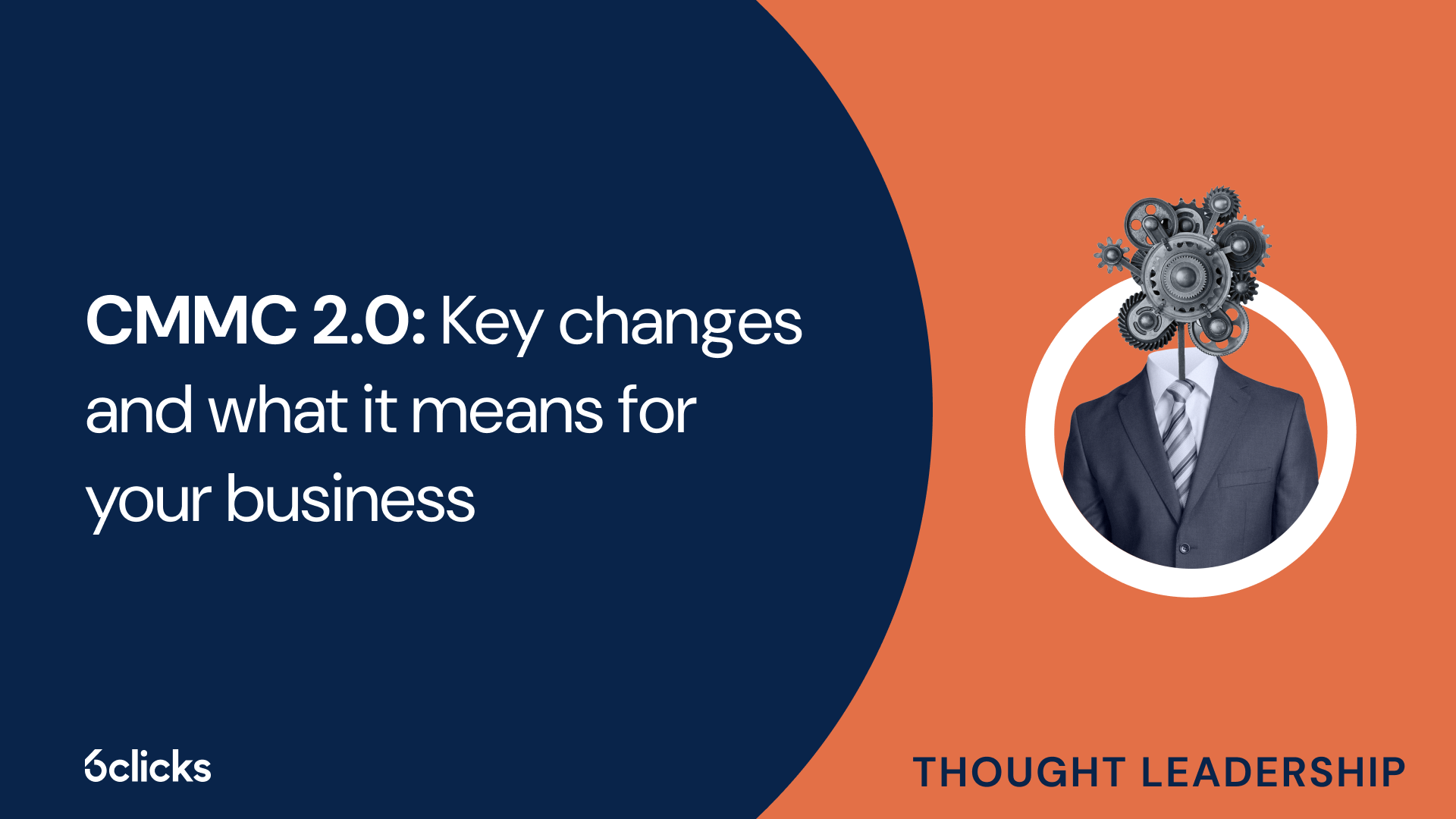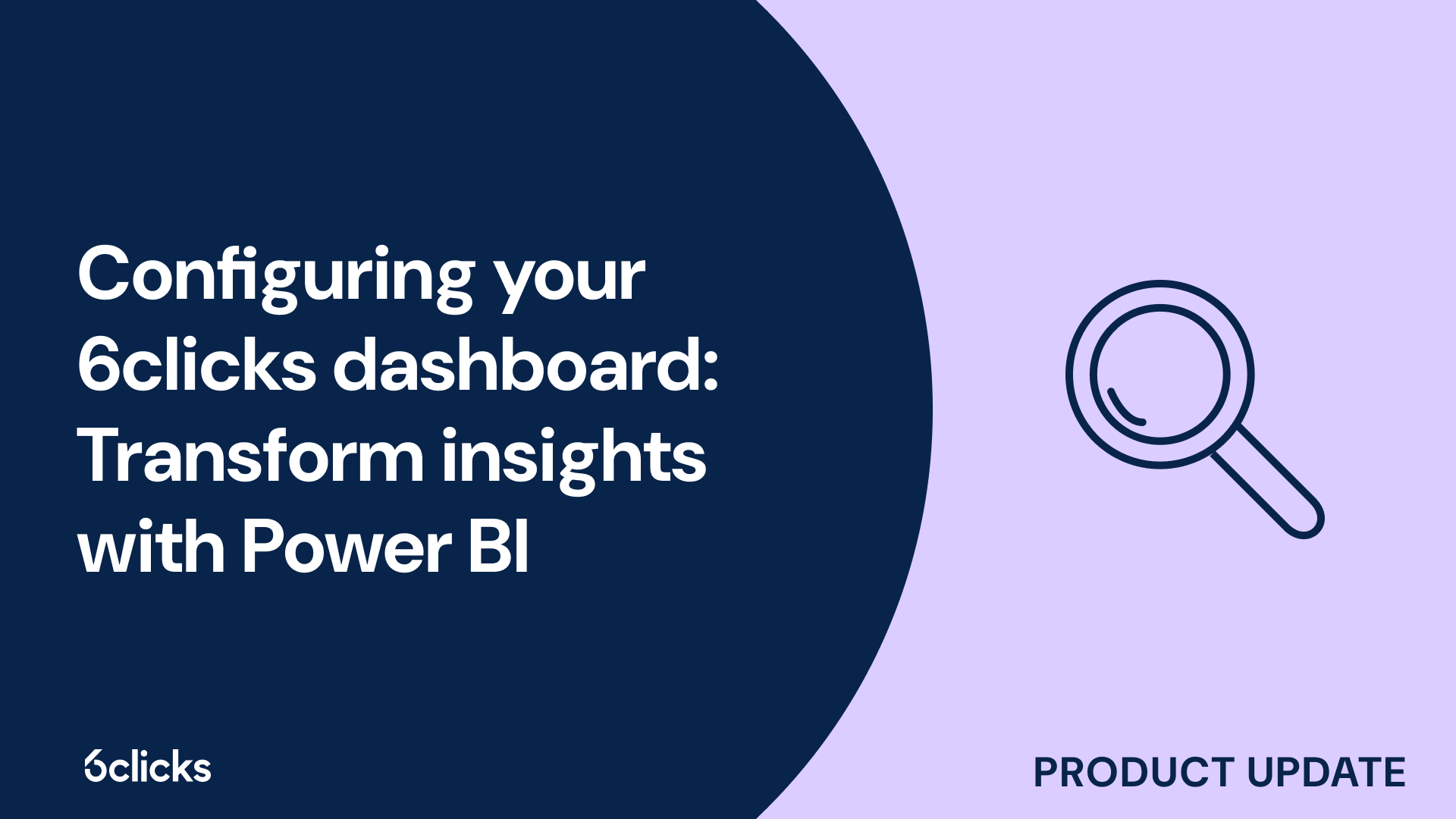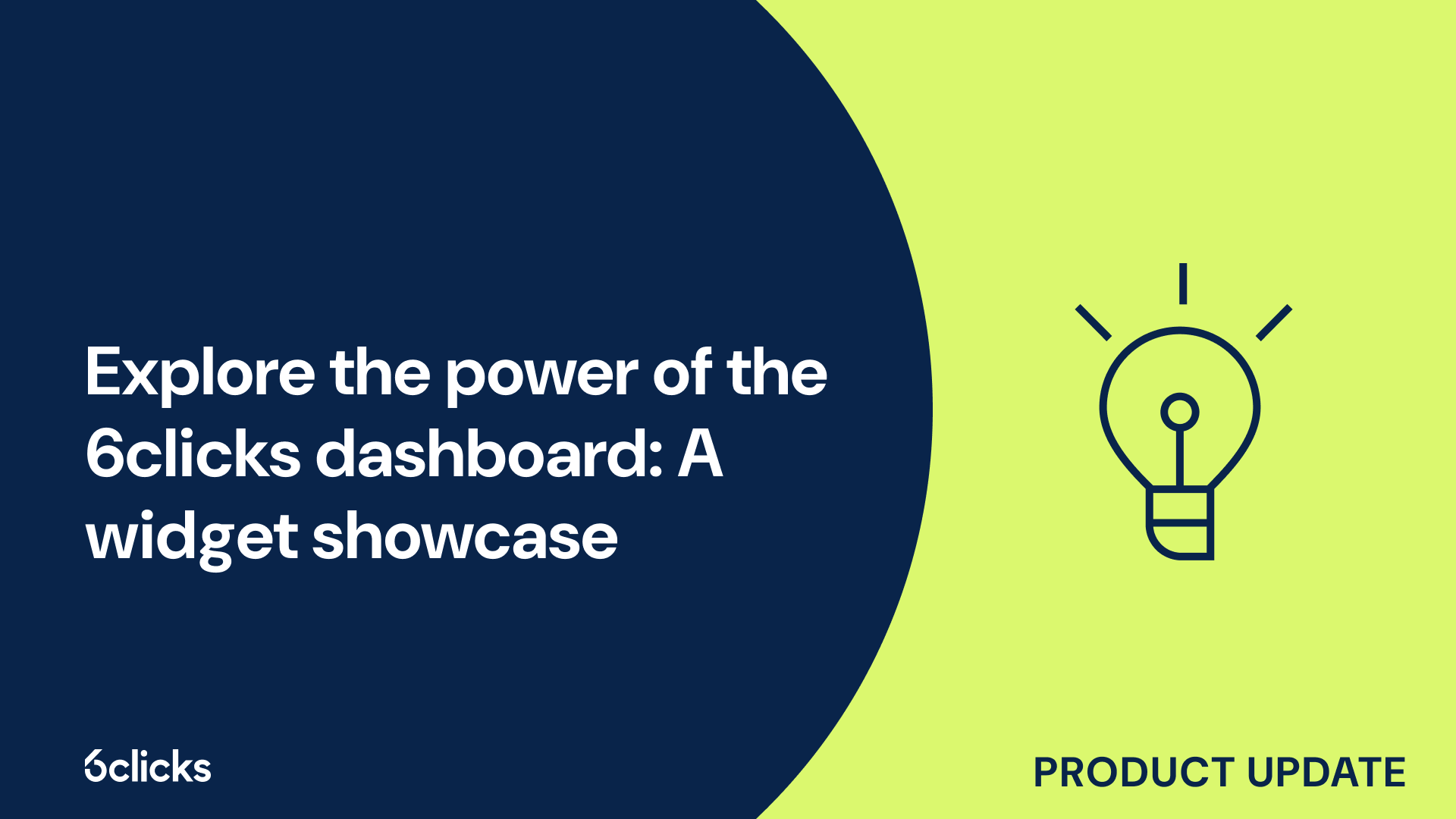The GRC buyer’s guide for 2025: Building resilience with AI-powered, federated solutions
-1.png?width=314&height=391&name=Group%20193%20(1)-1.png)
The GRC buyer’s guide for 2025: Building resilience with AI-powered, federated solutions
What is HITRUST?
HITRUST, which stands for Health Information Trust Alliance, is a comprehensive risk management framework designed for the healthcare industry. It provides a certifiable framework that helps healthcare organizations assess and manage their risk exposure, regulatory compliance, and security risks to protect sensitive patient information. The HITRUST Common Security Framework (CSF) is a control framework that includes control specifications, control objectives, and control maturity levels, allowing organizations to develop a tailored risk management program to meet their specific needs. By adopting HITRUST CSF, healthcare organizations can demonstrate their commitment to implementing security controls that meet industry standards and regulatory requirements, ultimately building trust with their patients, business associates, and external stakeholders. HITRUST also offers a range of certifications and assurance programs, including the HITRUST CSF certification process and the HITRUST Assurance Program, to provide a level of assurance and third-party validation for organizations' cybersecurity and risk management efforts.
What are the benefits of using HITRUST?
HITRUST, the Health Information Trust Alliance, is a comprehensive framework that provides a unified approach to managing risk and regulatory compliance in the healthcare industry. Using HITRUST offers numerous benefits to organizations, including:
- Regulatory Requirements: HITRUST satisfies a wide range of regulatory requirements, such as HIPAA, HITECH, and PCI DSS, allowing healthcare organizations to effectively meet compliance obligations without having to navigate and implement multiple frameworks.
- Accelerated Revenue and Market Growth: By achieving HITRUST certification, organizations can demonstrate their commitment to security and privacy to potential customers and business partners. This can lead to increased trust, credibility, and accelerated revenue growth.
- Time and Cost Savings: HITRUST streamlines the certification process by providing a certifiable framework that consolidates over 40 different regulatory standards. This eliminates the need for healthcare organizations to invest significant time and resources in interpreting and implementing numerous frameworks individually.
- Unified Framework: HITRUST acts as a single and comprehensive framework that allows organizations to assess and manage risk across the entire enterprise, including business associates and external stakeholders. This unified approach helps organizations develop a consistent and effective security program, reducing complexity and improving overall risk management.
Overview of HITRUST CSF
HITRUST CSF (Common Security Framework) is a comprehensive framework designed specifically for the healthcare industry to manage risk and ensure compliance with various regulatory requirements. It provides organizations with a unified approach to assessing and managing security and privacy risks throughout the enterprise. With its emphasis on a risk-based approach, HITRUST CSF enables healthcare organizations to identify, prioritize, and address potential security threats effectively. This framework consolidates over 40 different regulatory standards, including HIPAA, HITECH, and PCI DSS, simplifying the compliance process for organizations and saving them time and resources. By achieving HITRUST certification, organizations can demonstrate their commitment to security and privacy, gaining the trust and confidence of customers and business partners. The HITRUST CSF also allows organizations to develop and implement a proactive and mature security program, reducing complexity and improving overall risk management.
Control categories
The HITRUST CSF (Common Security Framework) is a comprehensive framework specifically designed for the healthcare industry to manage risk and ensure regulatory compliance. One of the key components of the HITRUST CSF is its control categories, which provide a structured approach towards risk management.
There are 14 control categories in the HITRUST CSF, each with its own objectives and specifications. These categories cover various aspects of risk management and compliance within the healthcare industry, including information protection, access control, human resources security, and privacy.
Each control category has specific objectives that organizations need to meet in order to address the associated risk factors. Within each category, there are control specifications that provide detailed guidance on how to implement the necessary controls to achieve the objectives.
It is important to note that the HITRUST CSF includes nearly 2000 control requirements. However, organizations are not required to address all of them. Instead, they can focus on a subset of controls based on their specific risk and regulatory requirements. This allows organizations to tailor their compliance program to their unique needs while still meeting industry standards.
By utilizing the HITRUST CSF control categories, healthcare organizations can effectively manage their risk exposure and enhance their compliance program. The framework provides a flexible and adaptable approach to risk management, allowing organizations to prioritize controls based on their level of risk and regulatory requirements.
Healthcare industry requirements
The healthcare industry has specific requirements for risk management to ensure the protection of patient data and maintain regulatory compliance. One prominent industry framework is the Health Insurance Portability and Accountability Act (HIPAA) regulations, which set forth standards for the privacy and security of protected health information (PHI).
Healthcare organizations are expected to comply with HIPAA regulations by implementing appropriate administrative, physical, and technical safeguards to protect PHI. These safeguards include conducting regular risk assessments to identify vulnerabilities, implementing policies and procedures to mitigate risks, and providing staff training on data security and privacy.
Critical data protection is a top priority in the healthcare industry. Healthcare organizations must ensure the confidentiality, integrity, and availability of sensitive patient information. This includes implementing access controls, encrypting data, and regularly backing up data to prevent loss or unauthorized access.
Robust threat monitoring is essential in healthcare organizations to address existing and emerging threats. This involves continuously monitoring networks, systems, and applications for any unusual or suspicious activities. By promptly detecting and responding to potential security breaches or incidents, healthcare organizations can take appropriate measures to mitigate risks and protect patient data.
Certification process
The HITRUST certification process consists of six steps: scope definition, determining next steps, choosing a validation type, conducting a gap assessment and remediation, undergoing a final HITRUST CSF assessment, and completing a HITRUST interim assessment.
In the first step, organizations define their scope by identifying the systems and processes that will be included in the certification. This helps determine the scope of the assessment and ensures that all relevant areas are covered.
Next, organizations determine the next steps based on their scope definition. This involves understanding the HITRUST certification requirements and identifying any additional steps or resources that may be needed.
Choosing a validation type is the third step, where organizations select the appropriate level of certification based on their risk profile, regulatory requirements, and business needs. HITRUST offers different validation types, ranging from a self-assessment to a third-party assessment.
Conducting a gap assessment and remediation is the fourth step. Organizations compare their current controls and processes against the HITRUST CSF controls and identify any gaps or areas of non-compliance. They then implement remediation measures to address these gaps and ensure compliance.
The fifth step involves undergoing a final HITRUST CSF assessment. An authorized HITRUST assessor evaluates the organization's controls and processes against the HITRUST CSF controls. This assessment determines the organization's readiness for certification.
Finally, organizations complete a HITRUST interim assessment. This assessment takes place after the initial certification and is conducted annually to ensure ongoing compliance and monitor any control changes or enhancements.
By following these six steps, organizations can successfully navigate the HITRUST certification process and demonstrate their commitment to information security and risk management.
Risk assessment and control requirement mapping
Risk assessment is a crucial component of the HITRUST framework, ensuring that healthcare organizations effectively manage and mitigate risks related to sensitive information and data. The process involves identifying, analyzing, and evaluating potential risks and security threats to determine the appropriate implementation level of security controls.
To begin, organizations conduct a comprehensive assessment to identify their risk profile. This assessment takes into account various factors, such as organizational, regulatory, and system risks. By analyzing these factors together, organizations can gain a holistic understanding of their overall risk exposure.
Once the risk profile is established, organizations can then map control requirements to the identified risks. This involves aligning specific security controls from the HITRUST CSF with the identified risks to ensure adequate protection. By mapping control requirements to specific risks, organizations can prioritize and focus their efforts on implementing controls that address their highest-risk areas.
The HITRUST CSF scorecard is a valuable tool for assessing compliance risk ratings for each control category. This scorecard measures an organization's compliance against the HITRUST control requirements, assigning ratings based on the level of compliance. The scorecard allows organizations to track their progress and identify areas that may require additional attention to achieve a higher compliance rating.
By conducting a thorough risk assessment and mapping control requirements, healthcare organizations can effectively identify and manage their security risks. This proactive approach helps in determining the appropriate implementation level of security controls based on the organization's unique risk profile, ensuring that their sensitive information and data are adequately protected.
Comprehensive framework for compliance programs
The HITRUST CSF (Common Security Framework) offers a comprehensive framework for compliance programs in the healthcare industry. This framework is designed to effectively manage data protection and information risk, while also aiding organizations in achieving their compliance objectives.
By adopting the HITRUST CSF, organizations can integrate all the necessary elements for managing risk and compliance. The framework provides a structured approach that aligns with industry standards and regulatory requirements. It offers a control framework that encompasses various control objectives, control specifications, and control maturity levels.
The comprehensive framework enables organizations to assess their risk profile and identify potential vulnerabilities. Through a thorough risk assessment process, organizations can prioritize and focus their efforts on implementing controls that address their highest-risk areas. This helps in effectively managing data protection and mitigating information risk.
Furthermore, the HITRUST CSF aids organizations in achieving their compliance objectives. It provides a clear roadmap and guidelines for meeting regulatory compliance requirements. The framework ensures that organizations are adhering to the necessary control requirements, thereby helping them avoid potential penalties and legal issues.
Privacy frameworks and security program integration
Privacy frameworks such as ISO, NIST, PCI, and COBIT can be seamlessly integrated into the HITRUST CSF framework to establish a robust and comprehensive security program for healthcare organizations. These frameworks provide valuable guidance on privacy and security requirements that are specific to various industries, including healthcare.
The integration of these privacy frameworks is crucial as it allows organizations to adhere to industry best practices and regulatory compliance standards. For example, ISO 27001 provides a systematic approach to managing sensitive information and ensuring its confidentiality, integrity, and availability. NIST Cybersecurity Framework offers a risk-based approach to managing and mitigating cybersecurity risks. PCI DSS focuses on securing cardholder data and preventing payment card data breaches. COBIT provides governance and control objectives that enable organizations to align their IT infrastructure with business objectives.
By integrating these frameworks, healthcare organizations can build a comprehensive security program that addresses a wide range of privacy and security requirements. For instance, the HITRUST CSF can incorporate ISO 27001 to establish a strong information security management system, NIST Cybersecurity Framework to enhance cyber risk management, PCI DSS to protect payment card data, and COBIT to ensure effective IT governance.
HITRUST essentials
HITRUST Essentials: A Comprehensive Risk Management Framework for the Healthcare Industry
The HITRUST CSF (Common Security Framework) is a comprehensive risk management framework specifically designed for the healthcare industry. It enables healthcare organizations to assess, manage, and mitigate their risk exposure by implementing a robust control framework that addresses a wide range of privacy and security requirements. HITRUST Essentials provides a structured approach that incorporates various industry standards and frameworks, including ISO 27001, NIST Cybersecurity Framework, PCI DSS, and COBIT. By integrating these frameworks, healthcare organizations can establish a strong information security management system, enhance cyber risk management, protect payment card data, and ensure effective IT governance. This certification process not only enables healthcare organizations to meet regulatory compliance requirements but also provides assurance to external stakeholders such as business associates and regulatory authorities. Through its comprehensive framework and risk-based approach, HITRUST Essentials assists healthcare organizations in effectively managing their risk profiles and building a secure and compliant environment.
Business associates & external stakeholders
Business associates and external stakeholders play a crucial role in the HITRUST risk management framework. Healthcare organizations often collaborate with business associates, such as vendors and partners, to provide various services or facilitate operations. These entities handle sensitive patient information and are essential for the functioning of the healthcare industry.
Business associates are important in managing risk and achieving compliance because they are responsible for adhering to HITRUST control requirements and regulations. They must demonstrate their commitment to data privacy and security, as failure to do so can lead to significant risks and liabilities for healthcare organizations.
Similarly, external stakeholders, such as regulators, auditors, and customers, influence risk management and compliance efforts. These stakeholders have a vested interest in ensuring that healthcare organizations protect patient information and comply with relevant regulations. Their involvement helps in evaluating risk exposure, assessing control effectiveness, and validating compliance programs.
Collaboration and communication with business associates and external stakeholders are crucial for the successful implementation of the HITRUST framework. Healthcare organizations must align their risk management strategies and control activities with those of their business associates. Regular discussions and information sharing enable a coordinated approach to risk identification, assessment, and mitigation.
Security risks & risk management solutions
In the healthcare industry, organizations face various security risks that can compromise the confidentiality, integrity, and availability of sensitive patient information. These risks include prior threat incidents, changes in IT environments, and third-party vendor risks.
Prior threat incidents refer to previous security breaches or cyberattacks that organizations have experienced. These incidents highlight vulnerabilities in the system and indicate potential areas of concern. Organizations can mitigate these risks by conducting thorough assessments of their existing security measures, implementing stronger access controls, and regularly monitoring their systems for any unusual activity.
Changes in IT environments, such as the implementation of new technologies or the expansion of digital platforms, can introduce new vulnerabilities. To manage these risks, organizations should perform regular risk assessments and gap analyses to identify potential areas of weakness. They should also ensure that their IT teams have the necessary training and skills to secure these evolving environments effectively.
Third-party vendors can also pose significant security risks if not properly managed. Organizations should conduct thorough due diligence when partnering with third-party vendors and ensure that these vendors adhere to industry best practices and regulatory requirements. Implementing strong vendor management and oversight processes, including regular audits and assessments, can help mitigate these risks.
Levels of risk & regulatory risk factors in the healthcare Industry
In the healthcare industry, organizations face various levels of risk that can have significant impacts on both patient safety and business operations. These levels of risk can be categorized based on their potential consequences and likelihood of occurrence.
High-level risks in the healthcare industry include patient harm, loss of sensitive patient data, regulatory non-compliance, reputational damage, and financial loss. These risks can arise from factors such as cyberattacks, data breaches, unauthorized access to patient information, system and network vulnerabilities, and failure to comply with regulatory requirements.
Regulatory risk factors further contribute to the complexity of risk management in the healthcare industry. Organizations in the healthcare sector are responsible for complying with various sets of regulations, such as the Health Insurance Portability and Accountability Act (HIPAA) in the United States. HIPAA sets standards for the protection of patients' medical records and other personal health information. Failure to comply with HIPAA and other relevant regulations can result in severe penalties and legal consequences for healthcare organizations.
To effectively mitigate risk in the healthcare industry, organizations must consider multiple factors. Firstly, they need to ensure compliance with industry frameworks and standards, such as HITRUST CSF (Common Security Framework) and NIST CSF (Cybersecurity Framework). These frameworks provide comprehensive guidelines and controls for addressing security and privacy risks specific to the healthcare industry.
Additionally, organizations must align their risk mitigation efforts with their business priorities and objectives. This includes assessing the potential impact of risks on patient care, financial stability, and reputation, and allocating resources accordingly to address the most critical risks.
Furthermore, organizations need to maintain comprehensive coverage for potential threats by regularly assessing and updating their risk management strategies. This involves conducting risk assessments, implementing appropriate controls, monitoring and analyzing security incidents, and continuously improving their security posture.
Applying the HITRUST framework to your risk management process
Applying the HITRUST framework to your risk management process is crucial for healthcare organizations looking to effectively mitigate the high-level risks they face. HITRUST CSF, or Common Security Framework, provides a comprehensive set of guidelines and controls specifically designed for the healthcare industry. By utilizing this framework, organizations can ensure compliance with industry standards and regulations, such as HIPAA, while also aligning their risk mitigation efforts with their business priorities and objectives. This includes assessing the potential impact of risks on patient care, financial stability, and reputation, and allocating resources accordingly. Regularly assessing, updating, and continuously improving their risk management strategies is essential to effectively address security and privacy risks in the ever-evolving healthcare landscape.
Control framework & objectives
The HITRUST CSF (Common Security Framework) is a comprehensive risk management framework specifically designed for the healthcare industry. It provides healthcare organizations with a standardized and certifiable framework to manage and address their regulatory and compliance requirements.
The control framework within the HITRUST CSF consists of different control categories, each designed to address specific objectives. These control categories include administrative safeguards, technical safeguards, physical safeguards, organizational requirements, and policies and procedures. Each control category aligns with multiple control references, which are specific requirements and guidelines that need to be followed to achieve the objectives.
To assess the implementation of each control, the HITRUST CSF utilizes the PRISMA (Process Risk and Maturity Assessment) methodology. This methodology uses five maturity levels: Initial (I1), Repeatable (R1), Defined (D1), Managed (M1), and Optimized (O1). These levels help organizations evaluate their control implementation and maturity, enabling them to identify areas for improvement and optimize their risk management processes.
Additionally, the HITRUST CSF allows for subset selection based on risk and regulatory requirements. This means that organizations can choose a subset of controls that align with their specific needs, allowing them to focus their efforts on the highest areas of risk and ensure compliance with relevant regulatory standards.



